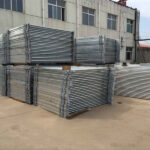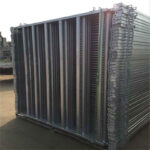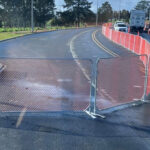Crowd control barriers play a crucial role in managing public gatherings, events, and construction sites across Australia. As safety and security become increasingly important, understanding the regulations surrounding these essential tools is vital for event organizers, local authorities, and fence manufacturers alike. In this comprehensive guide, we’ll explore the Regulations of Crowd Control Barriers in Australia and their implications for various sectors.
Overview of Crowd Control Barriers in Australia
Crowd control barriers, also known as barricades or crowd control products, are temporary structures designed to manage and direct the flow of people in public spaces. In Australia, these barriers are widely used for events, construction sites, and public safety measures.Fabricants de clôtures in Australia produce a variety of crowd control barriers, including:
- Barrières en acier
- Barrières en plastique
- Barrières rétractables
- Water-filled barriers
Each type serves specific purposes and must adhere to strict regulations to ensure public safety.
Australian Standards for Crowd Control Barriers
The Australian Standards play a crucial role in regulating crowd control barriers. These standards ensure that barriers meet specific safety and quality requirements:
- AS 4687:2007: This standard covers temporary fencing and hoardings, which includes many types of crowd control barriers.
- AS 1170: Focuses on structural design actions, relevant for ensuring barriers can withstand crowd pressure.
- AS 1428.1: Addresses design for access and mobility, ensuring barriers don’t impede accessibility for people with disabilities.
Compliance with these standards is essential for fence factory operations and event organizers using crowd control barriers.
Work Health and Safety Regulations
The Work Health and Safety (WHS) regulations in Australia also impact the use of crowd control barriers:
- Risk Assessment: Employers must conduct risk assessments when using barriers for crowd control or worksite safety.
- Training: Workers involved in setting up or managing crowd control barriers must receive proper training.
- Entretien: Regular inspections and maintenance of barriers are required to ensure ongoing safety.
These regulations apply to various settings, from construction sites using panneaux de clôture temporaires to large-scale public events.
Local Council Regulations
In addition to national standards, local councils often have specific regulations for crowd control barriers:
- Permit Requirements: Many councils require permits for the use of barriers in public spaces.
- Placement Restrictions: Regulations may dictate where barriers can be placed to ensure emergency access and public thoroughfare.
- Time Limitations: Some areas have restrictions on how long barriers can remain in place.
Event organizers should always check with their local council for specific requirements when planning to use crowd control barriers.
Event-Specific Regulations
Different types of events may have additional regulations for crowd control barriers:
- Événements sportifs: Stadiums often have strict requirements for barrier placement and types.
- Festivals de musique: May require specific barrier configurations to manage large crowds safely.
- Political Rallies: Often have security-focused regulations for barrier use.
- Street Parades: Require barriers that can be easily moved or adjusted.
Organizers should consult with local authorities and security experts to ensure compliance with event-specific regulations.
Construction Site Regulations
Construction sites have particular requirements for crowd control barriers:
- Perimeter Security: Barriers must secure the site from public access.
- Visibilité: Many regulations require high-visibility barriers or additional signage.
- Stabilité: Barriers must be stable enough to withstand wind and accidental impact.
Location de barrières de contrôle des foules services often specialize in providing compliant barriers for construction sites.
Accessibility Considerations
Australian regulations emphasize the importance of accessibility, even when using crowd control barriers:
- Clear Pathways: Barriers must not obstruct accessible routes.
- Width Requirements: Gaps between barriers must meet minimum width standards for wheelchair access.
- Tactile Indicators: In some cases, barriers may need to incorporate tactile ground surface indicators for visually impaired individuals.
Material and Design Regulations
The materials and design of crowd control barriers are also subject to regulations:
- Corrosion Resistance: Barriers used outdoors must be resistant to corrosion.
- Fire Safety: Materials should meet fire safety standards, especially for indoor use.
- Sharp Edges: Regulations prohibit sharp edges or protrusions that could cause injury.
- Load Bearing: Barriers must be able to withstand specified crowd pressures.
Transportation and Storage Regulations
Regulations also cover the transportation and storage of crowd control barriers:
- Vehicle Safety: When transporting barriers, they must be securely fastened.
- Storage Facilities: Storage areas for barriers must meet safety and fire regulations.
- Stacking Height: There are often limitations on how high barriers can be stacked.
These regulations ensure safety not just during use, but throughout the lifecycle of the barriers.
Environmental Regulations
As Australia focuses on sustainability, environmental regulations are becoming more relevant for crowd control barriers:
- Matériaux recyclables: Some areas encourage or require the use of recyclable barrier materials.
- Waste Management: Proper disposal or recycling of damaged barriers is often regulated.
- Eco-Friendly Options: Barrières de contrôle des foules en plastique options may need to meet certain environmental standards.
Signage and Visibility Regulations
Regulations often dictate how barriers should be marked or accompanied by signage:
- Reflective Elements: Many areas require reflective strips on barriers for nighttime visibility.
- Warning Signs: Specific warning signs may be required on or near barriers.
- Branding Limitations: Some regulations limit the amount of advertising or branding on barriers.
Maintenance and Inspection Regulations
Regular maintenance and inspection of crowd control barriers are often mandated:
- Inspection Frequency: Regulations may specify how often barriers must be inspected.
- Record Keeping: Many jurisdictions require detailed records of barrier inspections and maintenance.
- Replacement Criteria: Clear guidelines often exist for when barriers must be replaced due to wear or damage.
Emergency Response Regulations
Crowd control barriers must not impede emergency responses:
- Quick Release Mechanisms: Many regulations require barriers to have mechanisms for quick removal in emergencies.
- Emergency Vehicle Access: Barrier layouts must allow for emergency vehicle access.
- Evacuation Routes: Barriers must not obstruct designated evacuation routes.
Sanctions en cas de non-conformité
Failure to comply with regulations regarding crowd control barriers can result in significant penalties:
- Fines: Monetary penalties for non-compliance can be substantial.
- Event Cancellation: Authorities may cancel events that don’t meet barrier regulations.
- Legal Liability: Non-compliance can lead to increased legal liability in case of accidents.
Future Trends in Barrier Regulations
As technology and crowd management techniques evolve, regulations are likely to adapt:
- Barrières intelligentes: Regulations may soon address the use of barriers with integrated technology.
- Matériaux durables: Environmental regulations for barrier materials are likely to become more stringent.
- Dynamic Crowd Management: Future regulations may require more flexible and responsive barrier systems.
Conclusion
Understanding and adhering to the Regulations of Crowd Control Barriers in Australia is crucial for ensuring public safety, legal compliance, and effective event management. From barrières de contrôle des foules près de chez moi to large-scale international events, these regulations shape how we manage public spaces and gatherings.As Australia continues to prioritize safety and efficiency in public management, staying informed about these regulations is essential for event organizers, local authorities, and manufacturers alike. By following these guidelines, we can create safer, more organized public spaces for all Australians.
FAQ
What are the main types of crowd control barriers used in Australia? The main types include steel barriers, plastic barriers, retractable barriers, and water-filled barriers. Each type is suited for different applications and must comply with relevant Australian standards.How often should crowd control barriers be inspected? While specific requirements may vary, it’s generally recommended to inspect barriers before each use and conduct thorough inspections at least annually. Some regulations may require more frequent inspections for high-use scenarios.Are there specific regulations for using crowd control barriers at beaches? Yes, many coastal areas have specific regulations for beach events. These often include considerations for environmental protection, emergency access to the water, and the use of corrosion-resistant materials due to the salt environment.Can crowd control barriers be used for advertising purposes? While some advertising on barriers is often permitted, there are usually restrictions on the amount and type of advertising allowed. Local council regulations typically govern this aspect, and it’s important to check specific rules for each location.What are the regulations regarding Crowd Control Barriers Retractable systems? Retractable barriers must meet the same safety standards as fixed barriers. Additionally, they often have specific requirements for locking mechanisms, stability when extended, and clear marking of the retraction path to prevent tripping hazards.









